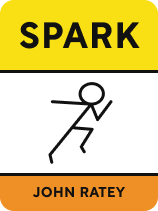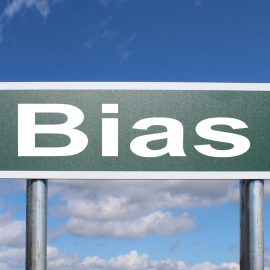

This article is an excerpt from the Shortform book guide to "Spark" by John Ratey. Shortform has the world's best summaries and analyses of books you should be reading.
Like this article? Sign up for a free trial here .
Why do we need to exercise? Does physical exercise have survival value?
According to John Ratey, the author of Spark, humans are evolutionarily built to move. When our ancient ancestors hunted down prey, their bodies and brains worked synchronously. The brain and body, therefore, became well-conditioned to support each other in a virtuous circle.
Keep reading to learn about the survival value of exercise, according to John Ratey.
The Mind-Body Connection
Why do we need to exercise? According to John Ratey, the author of Spark: The Revolutionary New Science of Exercise and the Brain, exercise has survival value. When our ancestors ran down their prey in prehistory, their bodies and brains worked in concert. They not only had to sustain high levels of physical exertion, but they also had to read and respond to their environment quickly and accurately to survive.
Today, our brains still operate as our ancestors’ did. The same neurological systems they used to hunt and gather are the ones we use to program computers, and our minds still function best in a mode of persistent activity. However, in our modern era we no longer face the same challenges our ancestors did. We may not share our ancestors’ reasons for moving, but we do share their need to move on a fundamental, biological level.
| The Evolutionary Origins of the Brain According to the Adaptive-Capacity Model Ratey never outlines a complete theory of the evolutionary origins of the human brain. He instead only gives a brief sketch of our ancestors’ presumed lifestyles to draw a correlation between exercise and the brain. In the years since the publication of Spark, a more complete theory of the causal link between exercise and brain function has emerged in neuroscience. According to the adaptive-capacity model (ACM) of the human brain, our brain adapted specifically to the complex foraging behavior of our ancestors. Searching for edible fruits, plants, fungi, and so on was cognitively demanding: It required complex physical coordination, decision-making skills, and memory. All this complicated behavior had to be done while running long distances, climbing, or otherwise being aerobically active. The evolving brain rose to the occasion by directing resources to areas of the brain that could support this behavior. The ACM holds that if a brain is not using the complex structures it evolved to forage, it will adapt to these reduced demands and cut back on the resources it sends to those parts of the brain, leading to cognitive decline. Proponents of the ACM believe this explains why we see more cognitive decline in the brains of people who have a lower educational attainment, fewer social contacts, or live more sedentary lifestyles: These are aspects of a foraging lifestyle that would have impacted our ancestors’ survival, in addition to exercise. The ACM thus offers a more complete account of the relationship between the brain and exercise than Ratey’s brief sketch of our ancestors’ lifestyle does, and it gives researchers a framework for studying how our present lifestyles affect our brains. |
Exercise Helps Us Learn
Ratey was inspired to study the connection between exercise and the brain after reading about Chicago’s Naperville public high school. Their novel fitness-first approach to gym class focused on getting students moving through regular exercise. A direct result of this improved fitness was significant gains in student performance. In a 1999 standardized test comparing Naperville students’ science and math knowledge with that of students from different countries, Naperville finished first in the world in science and sixth in math. Ratey concluded that the school’s focus on physical health was in large part the reason for their academic success.
| Correlations Between Physical Activity and Academic Performance Ratey’s conclusion that Naperville’s gym class model improved academic performance is supported by recent evidence—indicating that Naperville wasn’t a fluke. In the time since the publication of Spark, national surveys by the Centers for Disease Control (CDC) have found significant correlations between physical activity and academic performance. A collection of ten intervention studies showed significant improvements in academic performance as well as other markers of healthy cognition like attention and focus. In addition, students who regularly participated in physical activity reported higher self-esteem and confidence in their intellectual capabilities, factors that can lead directly to stronger academic achievement. |

———End of Preview———
Like what you just read? Read the rest of the world's best book summary and analysis of John Ratey's "Spark" at Shortform .
Here's what you'll find in our full Spark summary :
- How exercising can help with addiction, anxiety, and depression
- A look at how exercise optimizes brain function and supports mental health
- What exercises are the most beneficial, and how to stick to a routine






